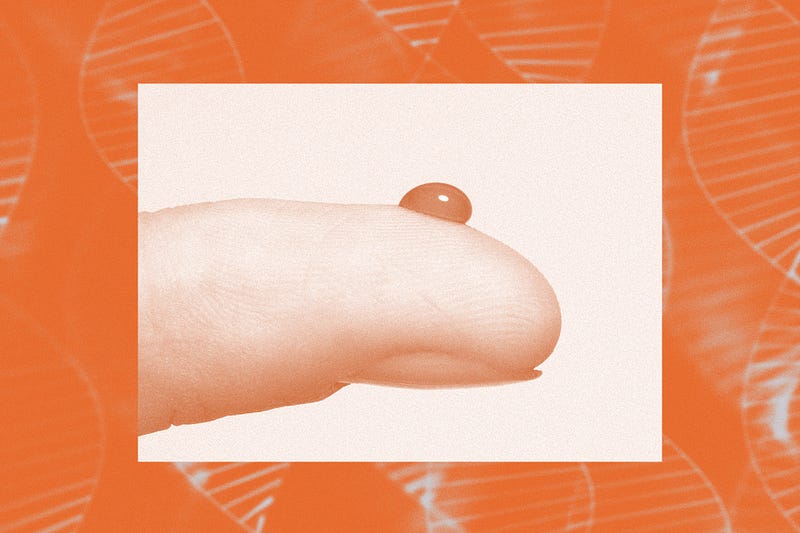Revolutionizing Diabetes Treatment Through Gene Editing
Written on
Chapter 1: A New Era in Diabetes Treatment
In the 1990s, a few individuals diagnosed with Type 1 diabetes participated in a groundbreaking experimental procedure aimed at curing their condition. This involved the transplantation of insulin-producing cells from deceased donors, with the expectation that these cells would compensate for the malfunctioning ones in the recipients.
Currently, over 34 million people in the U.S. — nearly 10% of the population — suffer from diabetes due to the damage or depletion of these vital insulin-producing beta cells. These cells are responsible for producing insulin, a hormone essential for regulating blood sugar levels. Consequently, individuals with diabetes must regularly administer insulin to manage their condition.
While the transplant procedure showed some success, allowing certain patients to temporarily forgo insulin injections, the benefits were short-lived, often lasting just months to years. Moreover, patients required potent immunosuppressant drugs to prevent their immune systems from rejecting the foreign tissue.
Despite these limitations, researchers continue to explore the potential of beta cells in diabetes treatment, and now they are optimistic about using CRISPR technology to enhance these efforts.
The first video explores the potential for CRISPR to provide a long-awaited cure for diabetes, detailing the groundbreaking advancements in gene editing.
Section 1.1: Advancements in Gene Editing
Scientists at Washington University in St. Louis, a pioneering site for these transplants, have recently employed CRISPR gene-editing technology to modify stem cells from diabetic patients, transforming them into fully functional beta cells. When these edited cells were implanted into diabetic mice, their blood sugar levels normalized. These findings were reported in the journal Science Translational Medicine on April 22.
Jeffrey Millman, an assistant professor of medicine and biomedical engineering, stated, “We were able to reverse the diabetes in the mice in about a week.” In previous research, Millman and his team discovered a method to convert human stem cells into insulin-producing pancreatic beta cells.
Subsection 1.1.1: Collaboration for Innovative Solutions
Collaborating with Dr. Fumihiko Urano, an endocrinologist specializing in Wolfram syndrome — a rare condition that leads to childhood diabetes and deafness — the team utilized skin cells from a patient to create induced pluripotent stem cells. They then applied CRISPR to correct the genetic mutation causing the disorder before converting these stem cells into pancreatic beta cells. These were subsequently injected into mice, and remarkably, after one week, their blood sugar levels stabilized and remained so for six months.

Section 1.2: Challenges Ahead
While the results are promising, significant challenges remain before this approach can be implemented in humans. One key issue is determining the optimal site for infusing the corrected beta cells. Previous trials attempting to infuse donor-derived beta cells subcutaneously were met with limited success.
Furthermore, creating a sufficient quantity of beta cells for treatment is essential; estimates suggest that roughly one billion cells would be needed, a process that could take several months to a year.
Another challenge lies in translating this technique for broader diabetes treatment. Unlike Wolfram syndrome, most diabetes cases arise from a combination of genetic and environmental factors, necessitating multiple genetic modifications to address these conditions effectively.
Chapter 2: The Future of Diabetes Therapy
If successful, this innovative treatment could provide a long-lasting solution for diabetes, and because it utilizes a patient’s own cells, it would eliminate the need for immunosuppressant medications. This approach may also prevent severe complications associated with diabetes, such as nerve damage, kidney failure, obesity, heart disease, and strokes. However, the individualized nature of this treatment presents scalability challenges.
The complexity of combining two experimental technologies adds to the hurdles. The first U.S. clinical trial utilizing induced pluripotent stem cells commenced in December, while CRISPR applications in human subjects are still in nascent stages.
The second video focuses on the role of stem cell science in driving research towards curing diabetes, emphasizing the significance of this groundbreaking work.
Despite these obstacles, the concept of utilizing CRISPR to edit stem cells has garnered significant interest from biotechnology firms. For instance, CRISPR Therapeutics has joined forces with ViaCyte to develop a gene-edited stem cell therapy for diabetes. Unlike the Washington University method, their approach involves using stem cells from a human cell line that can be perpetually cultivated, thus facilitating a faster scaling process without needing to correct individual genetic mutations.
To mitigate the risk of rejection by the immune system, these companies are employing CRISPR to modify the transplanted cells to evade detection. This advancement could potentially eliminate the necessity for immunosuppressants, although the therapy is yet to be tested in human subjects.
While CRISPR-modified stem cells are not expected to replace insulin therapy in the immediate future, we may witness the first human trials within a few years.
More stories from OneZero about the future of genetic engineering:
- CRISPR Could Finally Make the First Truly Allergy-Free Cat
- A Shot of CRISPR Could Restore Sight to the Blind
- CRISPR Eliminated Symptoms of Genetic Disease in Two Patients